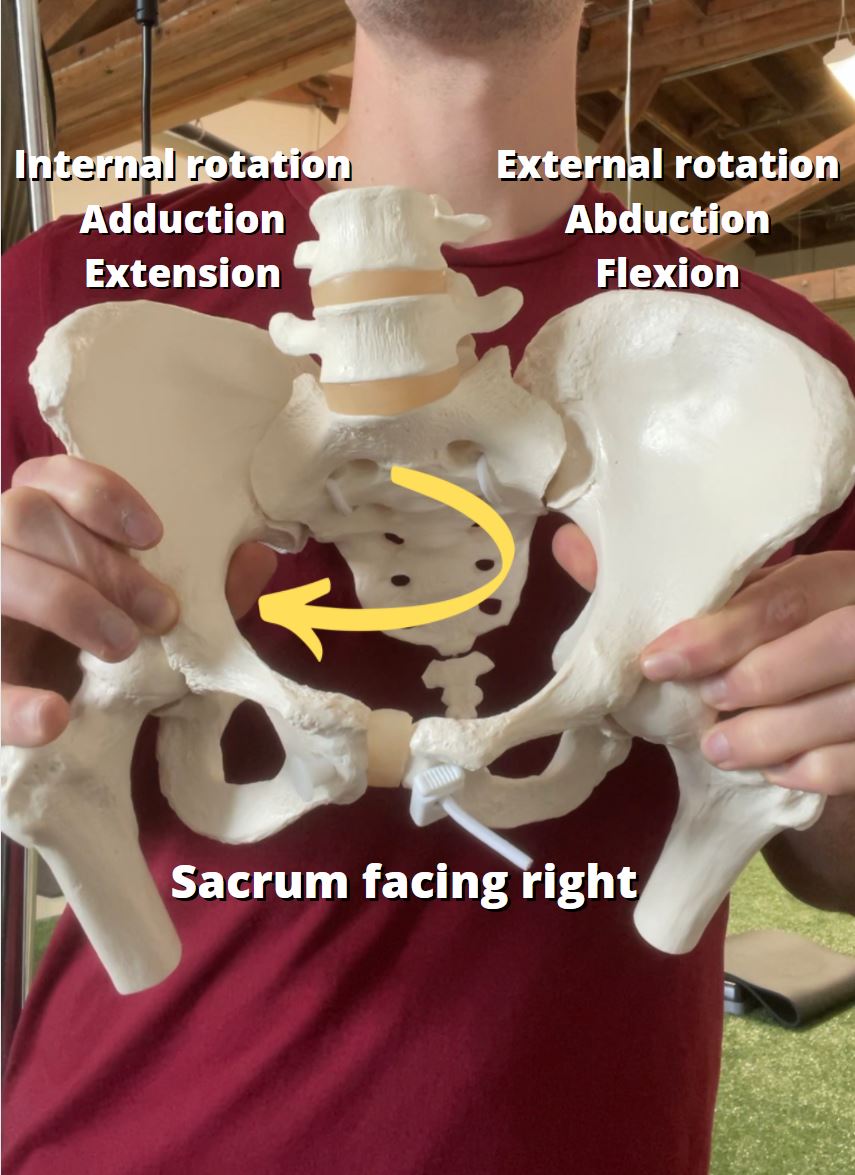Powerlifters & Strength Athletes: How I Program & Improve Movement
Jun 08, 2022
I get the question a lot of “What drills should I do to keep lifting or training the way I want to while still making gains?”
I’m going to answer that question as best I can in this article.
One of the most common populations I work with is people who have goals to be as strong as possible. An example of this population would be a Powerlifter. They are the apex example of the type of person I will be discussing, but the following article will be relevant to many, many people who have a few years of good training under their belt.
In this article I will discuss:
- Common biomechanical problems Powerlifters experience
- Strategies for improving limitations
- Programming strategies for improving limitations
If you would rather watch than read, see below:
Common Biomechanical Problems of Powerlifters
What are the most common exercises in Powerlifting? Barbell squat, bench press, and deadlift of course. What do these exercises all have in common?
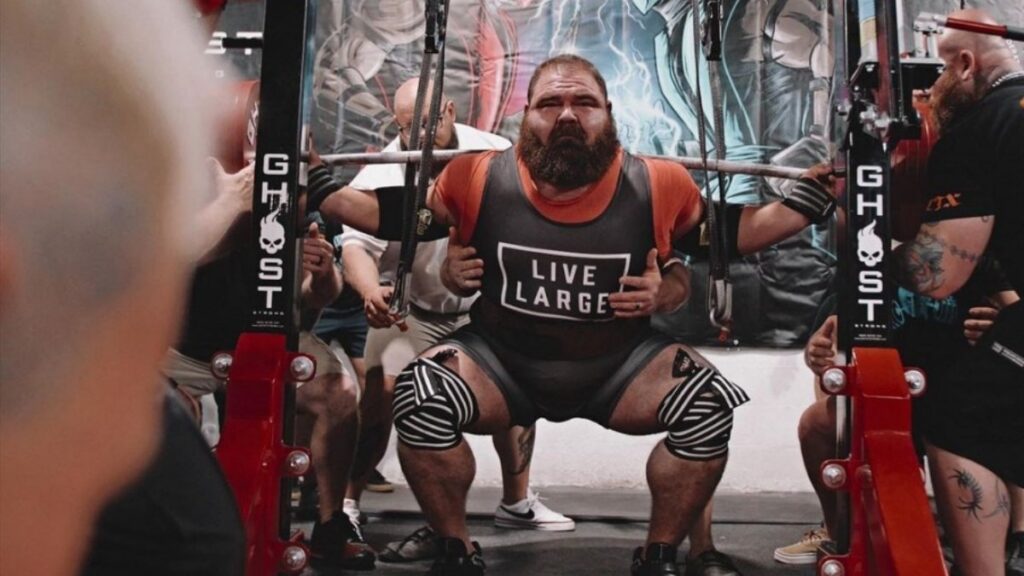
They are sagittal plane-dominant exercises, meaning that they are primarily exercises that take place in the movement plane of forward, back, up, and down.
We know that the body adapts to the imposed demands onto it (S.A.I.D principles), so the most common thing these individuals are missing is rotation.
Rotation is the name of the game when it comes to relative motion – a concept I discuss heavily in many pieces of my content. The short of it is that the pelvis, ribcage, and all major joints are going to have actions that occur relative to one another so that we can alternate between sides of the body (via rotation).
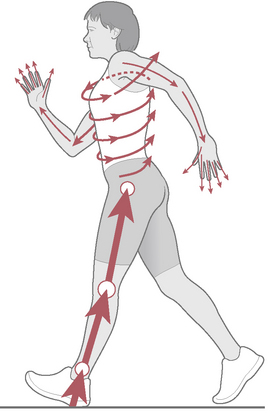
This happens all the time, and is necessary for so many basics tasks like walking. If you don’t have the ability to get relative motion, you will move through orientation:
Orientation is not necessarily “bad”, but repetitive movement through orientation can lead to some potential problems down the line.
Orientation of the pelvis is necessary in high force-producing movements such as high RPE barbell lifts, and even sprinting. Basically, the more force you need to produce, the more it benefits us to create stiffness and compression to limit excessive movement so that we can maximize pressurization of our body.
Obviously, this is quite helpful if your goal is to lift a lot of weight.
Not so helpful if your goal is to be able to dissociate sides of your body or your upper body from your lower body.
This is why many Powerlifters have this sort of “waddle” when they walk – they can’t exactly dissociate sides of their body or find rotation. They orient themselves from side to side because their body has adapted to the demands placed on it.
I very often see Powerlifters present with the following limited ranges of motion:
- <90 degrees of hip flexion
- <45-50 degree active straight leg raise
- <90 degrees of shoulder flexion
- Very limited hip rotation, but usually better hip external than internal rotation
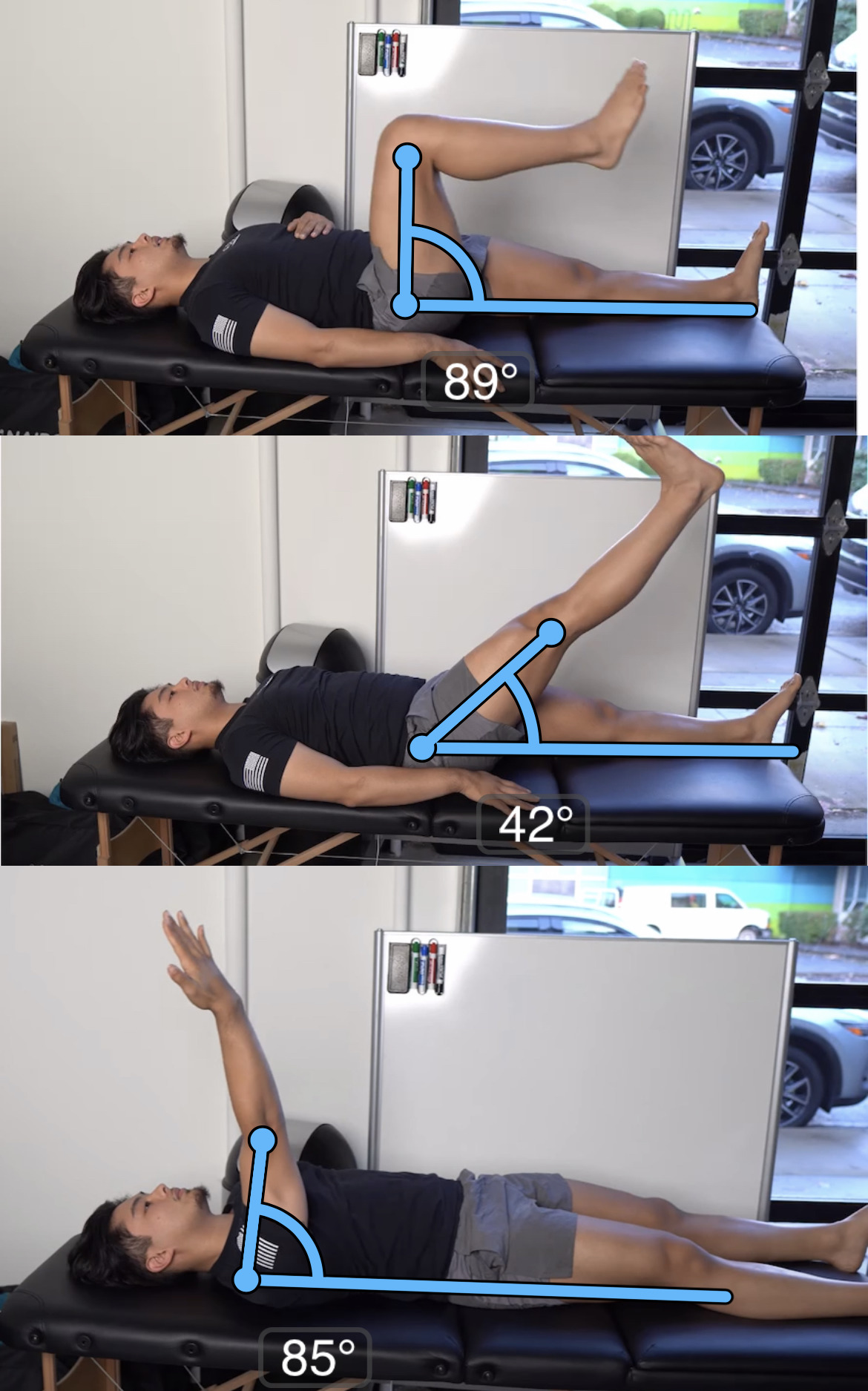
Keep in mind that the manner in which I take these table tests is very precise, and while they appear easy to execute, there are many compensations that can give us an inaccurate view of how much range of motion someone has. My Biomechanics Program will show you how to get a precise idea of someone’s movement limitations.
How do these limitations develop?
A correlation to a lack of relative movement is extension tone.
I refer to extension tone as the amount of muscular tone in muscles that create extension in the body (back extensors, lats, quads, etc). As the pelvis goes more and more forward (into extension), the more these muscles pick up leverage to become tight.
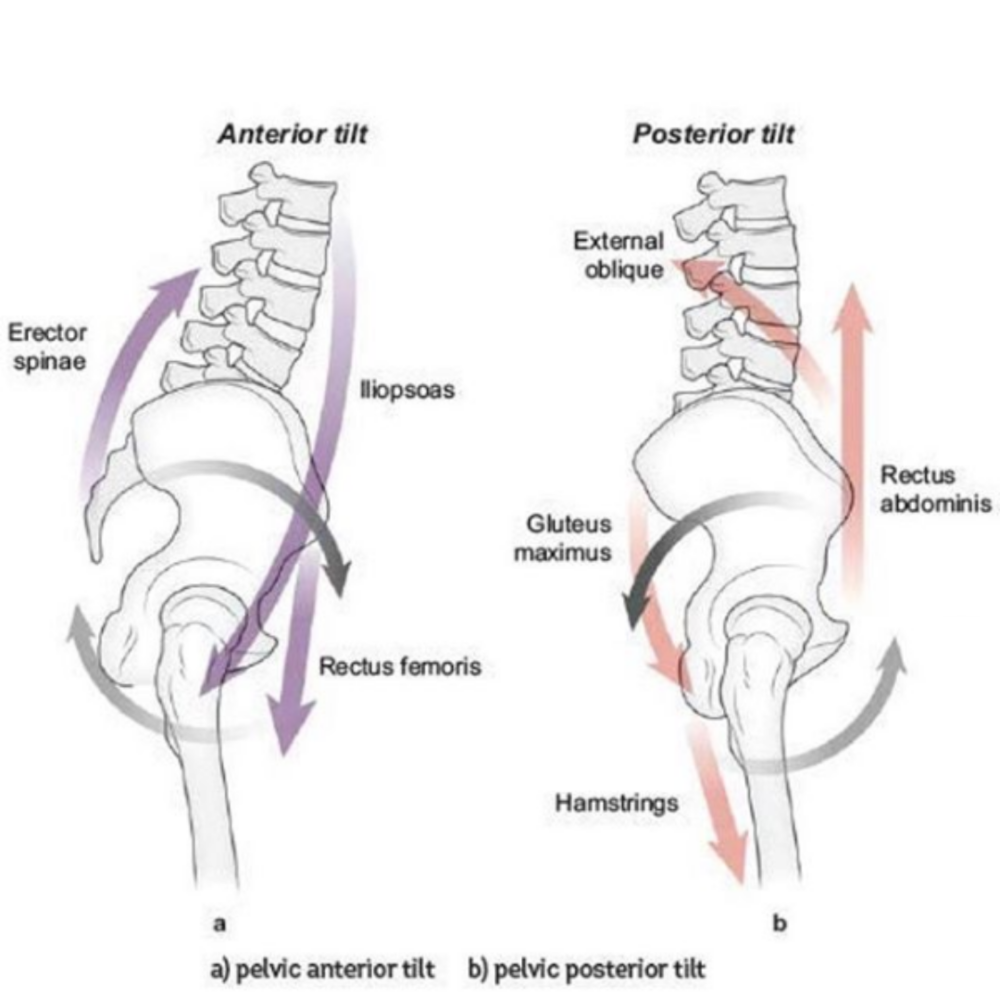
Yes, I know that anterior pelvic tilt is not necessarily associated with pain. But the idea of how it causes movement through orientation and a lack of movement options is still relevant. As I define it, extension tone is a systemic adaptation that builds over time.
Extension is necessary to produce force under high loads. It is not a problem, but we can see that how when people lift heavy weights, extension will be driving the show:
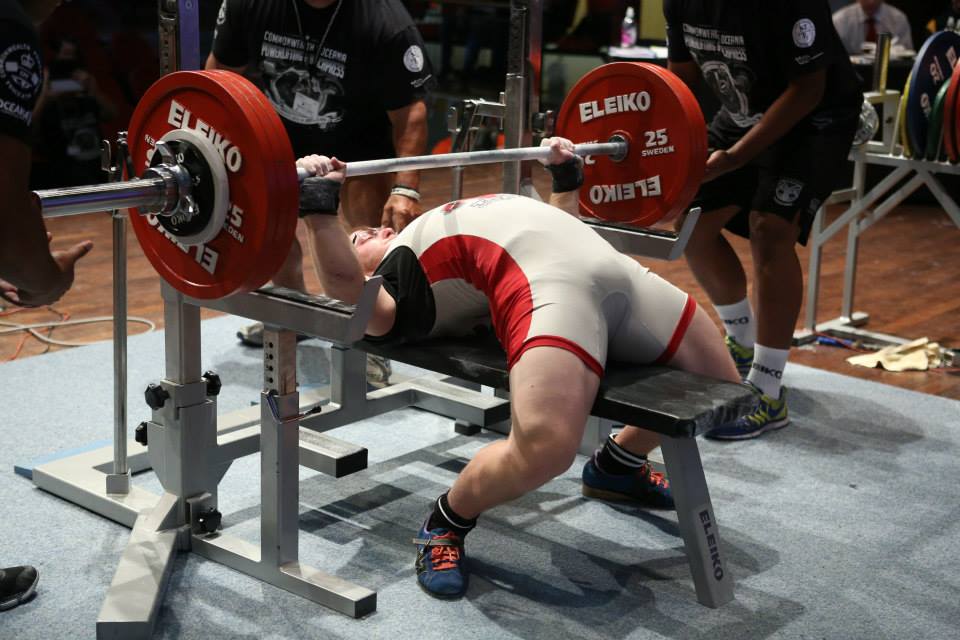
Powerlifters don’t have a lot of reason (on the surface) to train flexion-based positions because everything they need to do to succeed requires compression and extension. Which is fine, assuming you can train like that forever and not get hurt…
But we know that’s not the case for 99% of Powerlifters. Powerlifters are either training towards their goal or rehabbing so that they can do so.
In my opinion, a huge advantage you can gain as a Powerlifter is to be able to stay healthier for longer than your competition. If you aren’t rehabbing, you’re spending more time making gains and less time trying to get back to where you are before. This could save weeks to months per year in your programming.
Asymmetrical Considerations
The concept of “extension tone” is something that is going to occur on both sides of the body because obviously both sides are experiencing more or less the same stimulus.
However, there is another consideration – asymmetrical joint positions.
I’ve discussed in the past how the Left AIC pattern is something that underlies human beings. There are certain predictable limitations that are going to occur from this – primarily limited hip internal rotation on the left and external rotation on the right.
The right side tends to be easier to “load” than the left and the left tends to be easier to “push” out of. For this reason, we often see more right hip shifts in squats than left (a left hip shift would be an additional compensation that is beyond the scope of this article).
I find this asymmetry is exaggerated in Powerlifters many times. Powerlifters struggle to shift into their left hip as much as they can on the right, so over time, stress is not evenly distributed amongst the tissues and joints in heavy loading.
Again, this is not inherently problematic as we are all asymmetrical, but over time, this can lead to problems down the road.
So what can we do?
That was a lot of information. To recap, Powerlifters and heavy lifters tend to be:
- Stuck in the sagittal plane and lack rotation
- Unable to get out of extension tone and a forward pelvis
- Less able to shift into their left hip and push out of their right hip
Generally speaking, the first thing I want to do is downregulate the extension tone systemically. We have an entire body that is unable to flex or rotate. I speak much more about this in detail in my Biomechanics Program. If you are a coach, this is the perfect course for you to learn the strategies to progress the ideas in this article.
Following that, we can improve underlying asymmetries as there will be more variability in the system present to do so.
There is an additional consideration though for a strength athlete: How close are they to a competition?
If they have a meet in three weeks…well… things will be harder. We have to be realistic here.
We aren’t as easily able to decrease the load and alter the training stimulus. Keep in mind that while what I discuss in this article is very helpful, nothing will ever beat out load management.
The optimal circumstances would be to have someone who is far away from a competition so that we can move away from the very thing that is creating the problems: Heavy bilateral lifting.
That will buy us some time to create changes that can last, rather than having a huge lifting stimulus interfere.
I will start with exercises that promote flexion and rotation. It isn’t very easy to rotate if you are stuck in extension.
Flexion-based positions will also allow us to help pull the pelvis back on both sides a bit so that we can regain relative movement:
Technique used with permission. Copyright © Postural Restoration Institute®2022. www.posturalrestoration.com
This might look like a lot of flexion, but think about it like this: If you’re stuck really far in one direction (extension), then initially pushing you far in the other direction (flexion) will help you end up somewhere in the middle.
Technique used with permission. Copyright © Postural Restoration Institute®2022. www.posturalrestoration.com
A big consideration here is breathing and the obliques. The obliques need to work to help oppose and downregulate the muscles of extension such as the lumbar erectors, but unfortunately many Powerlifters have a hard time feeling these work in respiration, or even in lifts themselves.
If someone can’t feel their obliques as I mention in the videos above, we have to give them an ability to create awareness of them. I will use something like below where they will have no choice but to feel their obliques and then it will carryover much more easily to the first drills above.
95% of the time, it works every time.
Addressing Asymmetry
Once I’ve been successful in improving the position of their pelvis (I’ll know because their hip extension, hip flexion, and shoulder flexion will improve to the extent I need them to), I will then address asymmetry if it is needed.
Creating an ability to better shift into the left hip and push out of the right hip is essential for the overwhelming majority of people.
My goal is to give them some ground-based drills to create an ability to do that in the first place, then them up with more loaded variations in the weightroom to pattern it more specifically.
Here are some drills I’ve found to work specifically with Powerlifters:
Technique used with permission. Copyright © Postural Restoration Institute®2022. www.posturalrestoration.com
Technique used with permission. Copyright © Postural Restoration Institute®2022. www.posturalrestoration.com
Programming Accessory Exercises
Because the goal is to be able to feel good with heavier loads, we need to also incorporate some weighted exercises. If there are significant exercises present, starting lighter is better than heavier. Remember that the heavier loads we use, the more we will want to move through orientation.
Things that promote relative motion are:
Single leg exercises with both feet fixated to an external reference (the floor and/or a wall):
Single arm exercises that promote reaching, alternation and expansion:
Bilateral loads with low loads and references that improve desired joint actions:
Over time, I will progress these exercises in a strategic manner specific to the individual so we can increase loading and specificity to their goals. If you're looking for more strategies to improve movement to help your clients feel great, check out my free webinar: 5 Strategies To Help Your Clients Feel 85% Better Immediately
Don’t miss out on free education
Join our email list to receive exclusive content on how to feel & move better.

